 If intense colours, imposing mountains and rich indigenous histories are your travel must-haves, then the 260-mile stretch between Taos, New Mexico and Cortez, Colorado will deliver your dreams in spades.
If intense colours, imposing mountains and rich indigenous histories are your travel must-haves, then the 260-mile stretch between Taos, New Mexico and Cortez, Colorado will deliver your dreams in spades.
The relief of climbing into high altitude after traveling across Texas in a record heat wave matches that of a cool and cleansing shower after a week of dry, dusty camping. And once we hit elevations above 5000 feet, we didn’t descend until southern Oregon, meaning no matter how hot the days, the nights were blessedly cool.
Stuart made some adjustments to the RockVan to keep it from gasping for oxygen and we all wished it were so simple for us as we swam, hiked and revelled in the grandeur of the southern Rockies.

While Santa Fe proved to be the pretty little pueblo-style adobe mountain town I remembered from earlier visits, it also offered very little for those who aren’t interested in shopping as our primary activity as travellers. The well-heeled shops around the plaza offered no enticement to these secondhand evangelists, though the distinctive New Mexican cuisine most definitely did. In fact, both the red and the green salsas are so utterly delicious I just couldn’t choose so opted for both on my huevos rancheros.
We also discovered the joys of Johnny & Jane’s Chop Shop, where we had our first full family haircut ever. Offering up our travel-weary tresses in exchange for Santa Fe stories from John was a far more pleasant way to get to know Santa Fe than moving through the endless retail options to purchase our little piece of the town, and left us with a stronger impression of a place inhabited by interesting bohemians rather than homogenous salespeople.
As regular readers would expect, the Jonai took the high road to Taos, then fretted for miles at the loss of phone reception whilst traveling this steep, curvy, remote route in the under-aspirated RockVan. At 7,000 feet, the best it can do is about 20mph up the often 8%-grade inclines, but once again, the RockVan prevailed.
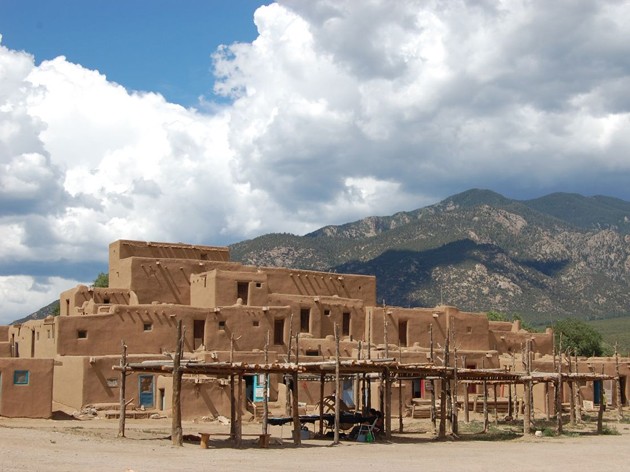
Taos is in high desert country surrounded by the towering peaks of the Sangre de Cristo Mountains — redefining ‘broadening one’s horizons’ for us as we spun dizzily trying to take in the palpable extravagance of mountains and sky.
Here the Taos Indians and their ancestors have lived for thousands of years, and built the magnificent Taos Pueblo sometime in the centuries leading up to the 15th century. Today it is the oldest continuously-inhabited community in America.
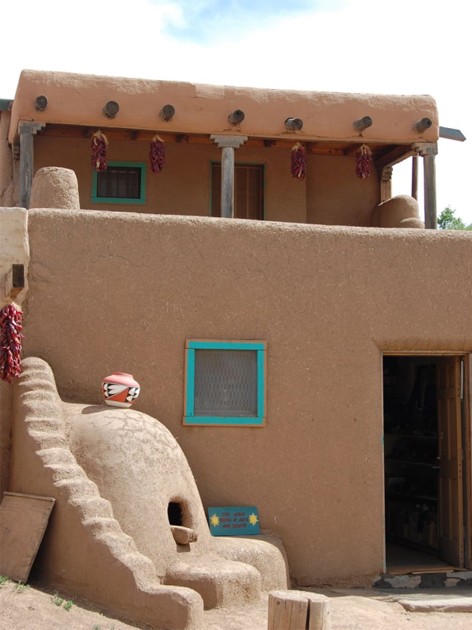
The 150 or so permanent inhabitants appear to largely make a living from the regular flow of tourists, selling the regionally distinctive jewellery made of turquoise typically set in silver, blue corn fry bread and miscellany, but they close the Pueblo to visitors for a period of rest and reflection from late winter to early spring each year.
Cruising gently out of town to the northwest you can’t help but cross the impressive Rio Grande Gorge Bridge. Standing high above the river, we all clutched the railings as each crossing truck shook the bridge sufficiently to delight most thrill-seekers.
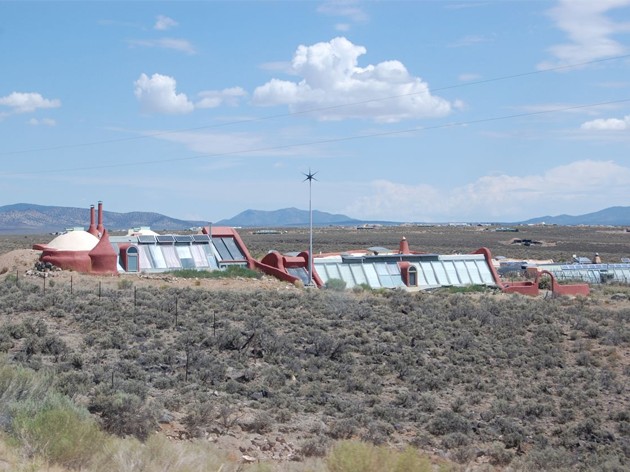
The other sight just out of Taos is the original community of Earthships — marvels of sustainable (radical) architecture hunkering down in this barely hospitable land so effectively designed that some of them grow banana palms inside!
A night in the remote Lake Heron State Park just below the Colorado border rounded out the lasting impression of high country beauty that pervades the fabulous Rockies, and offered yet another opportunity for leaping off rocky escarpments into pristine waters.
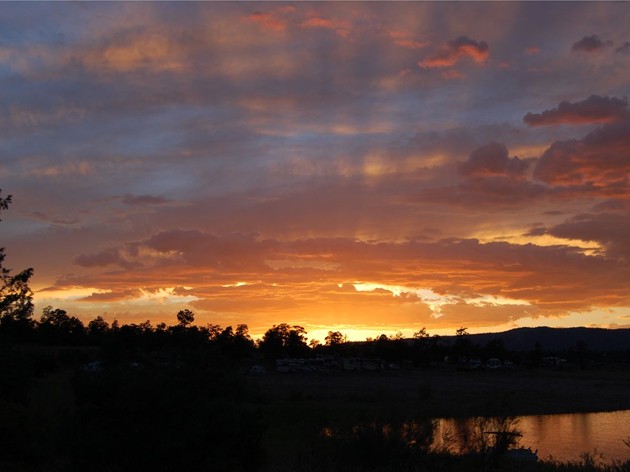
Durango, Colorado is mountain action extraordinaire, and by the looks of current improvements to the bike trails, these people are active indeed. The town is a happy melange of microbreweries and cafes, and while the pubgrub we discovered was fine, the local craft beers were a delicious array of the ubiquitous IPAs to oatmeal stouts we’ve come to expect everywhere.
For us, the primary goal in Durango was to catch the narrow-gauge train to Silverton, which sits at a lofty 9300ft. Trains started chugging people up the mountains in 1882 — I first went on this all-day pilgrimage with my family during a motorhome trip when I was nine and was left with an enduring memory of creeping along sheer cliffs plunging to the Animas River below.

It takes the train three and a half hours to travel a mere 45 miles, and includes some of the most dramatic scenery the Rockies have to offer. We marvelled at the cleverly engineered cuts barely wider than the train at times — those with a fear of heights might want to sit to the left.
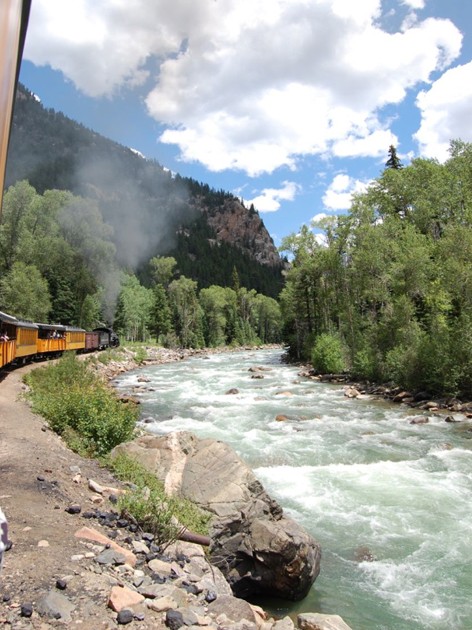
Having arrived solidly in the West, our adventures escalated at Mesa Verde National Park as we experienced how the Ancestral Pueblo people lived in cliff dwellings by clambering up 50-foot ladders and through tunnels the exact width of our fried-food-widened hips.
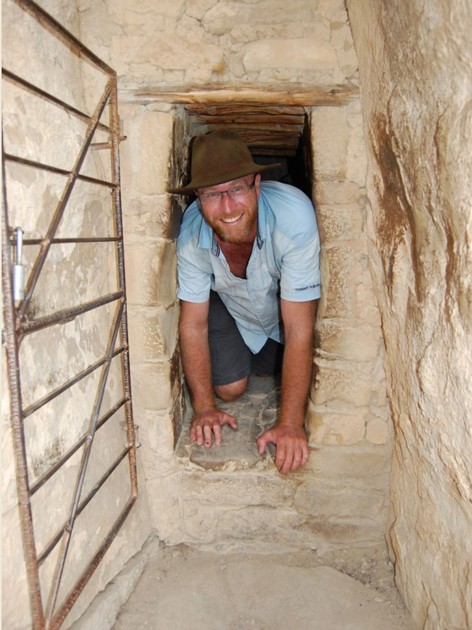
As the ranger pondered why it took these remarkable people until the 1190s to move down off the mesa top and into the cliffs, we were more struck by the unlikely fact that they lived there at all! The difficulty in reaching the Balcony House was increased when the Ancestral Puebloans added interior walls and tunnels to make their homes easier to defend as they housed the only spring for miles through a severe drought in the late 1270s.
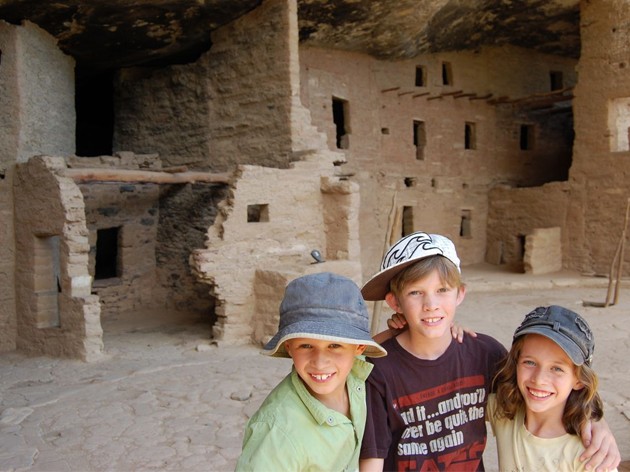
Driving down off the high mesa was just as dramatic as climbing it, and I reflected on the incredible beauty and history of this awe-inspiring national park of which I’d never heard until days before. And that’s the way with the West — there is so much gobsmacking landscape looming around every corner, usually full of potential adventures, you’re sure to stumble across another one if you just keep driving.
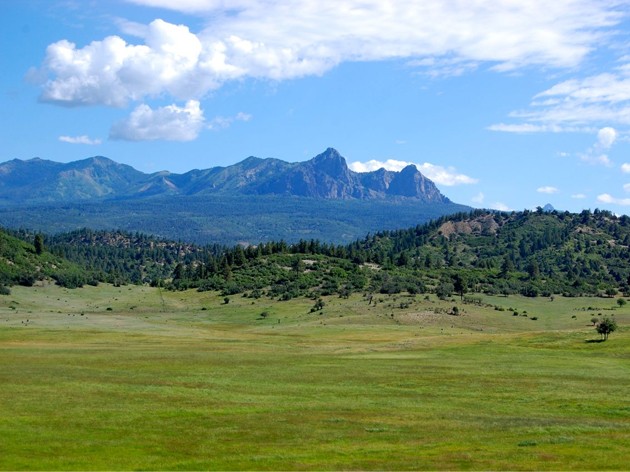
And so we did. Stay tuned for Utah…







Crikey is committed to hosting lively discussions. Help us keep the conversation useful, interesting and welcoming. We aim to publish comments quickly in the interest of promoting robust conversation, but we’re a small team and we deploy filters to protect against legal risk. Occasionally your comment may be held up while we review, but we’re working as fast as we can to keep the conversation rolling.
The Crikey comment section is members-only content. Please subscribe to leave a comment.
The Crikey comment section is members-only content. Please login to leave a comment.